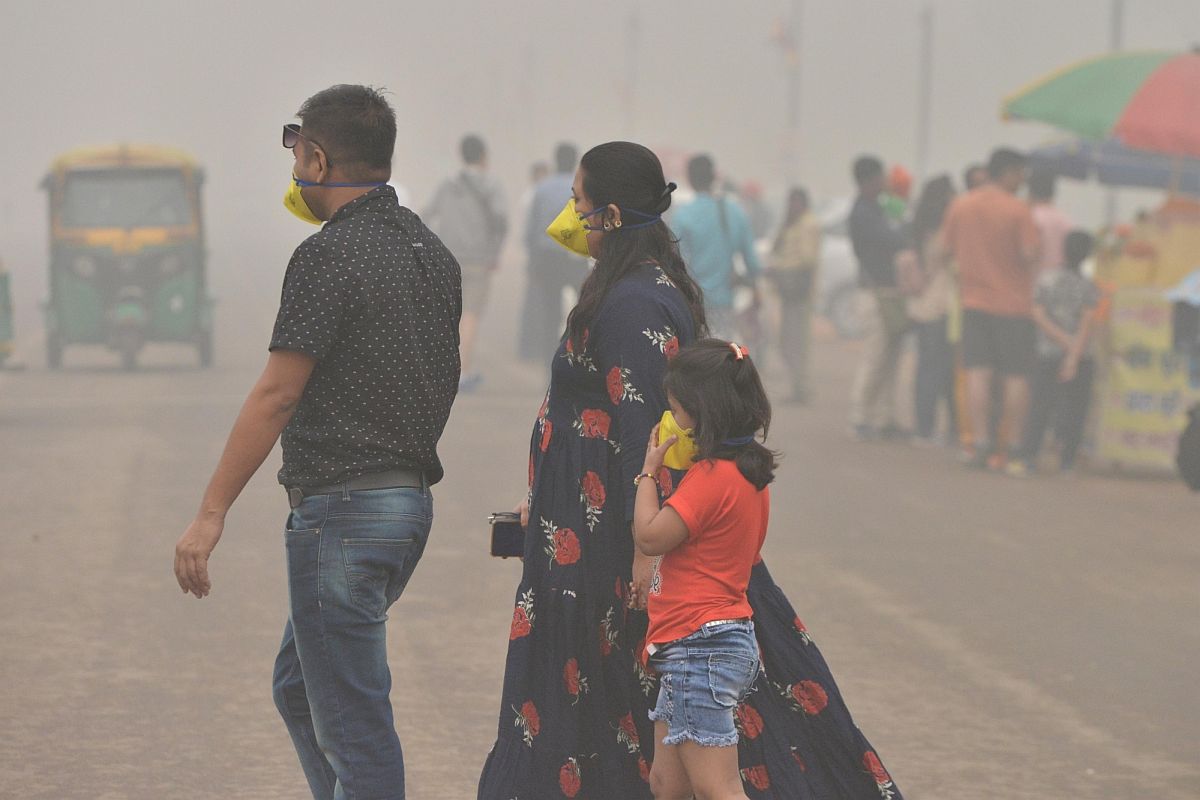As Delhi AQI turns severe, curbs on cars and construction return
AQI in Delhi's Anand Vihar was recorded at 478 on Sunday morning.
Urging neighbouring states to impose a ban on firecrackers in view of Diwali, the minister said that the move will have a better impact on pollution levels in Delhi and NCR.

File Photo
The air quality in national capital Delhi and its surrounding regions showed marginal improvement on Thursday but Environment Minister Gopal Rai warned it is likely to go up after October 30. The Delhi Environment Minister said that the national capital witnessed lesser bursting of firecrackers on Dussehra due to which the AQI showed improvement.
Urging neighbouring states to impose a ban on firecrackers in view of Diwali, the minister said that the move will have a better impact on pollution levels in Delhi and NCR.
“I think that comparatively, firecrackers were burst at lesser number of locations this time (during Dussehra). I would like to once again request the states in Delhi-NCR to ban (firecrackers) because it is easily available to people in their states. I think if NCR states ban it too, this will have a better impact on Delhi,” Gopal Rai said.
Advertisement
The NCR encompasses Delhi and several districts surrounding it from the states of Haryana, Uttar Pradesh and Rajasthan. The overall air quality in the national capital on Wednesday morning was recorded in the ‘moderate’ category, with the Air Quality Index (AQI) at 190, as per SAFAR-India.
On the improvement, the Environment Minister said, “Two days back, the AQI level in Delhi was above 300. A decrease in the AQI level has been recorded and it has come below 300. I think that in the days to come, this will keep fluctuating. It is being estimated that after October 30 this will perhaps go up again.
“As per the latest data from the System of Air Quality and Weather Forecasting and Research (SAFAR), the air quality around Delhi University was recorded at 273 (poor) in the morning hours, while the IIT area in New Delhi was at 173 and that in Lodhi Road was recorded at 149 which falls in the ‘moderate’ category. According to the data, the AQI stood above 300 in at least 13 pollution hotspots in Delhi on Tuesday.
Rai said that while stubble burning cases this year have decreased, they are likely to go up around October 30.
“Stubble burning is going on but the number of such cases is low as of now. But it is being estimated that these cases will increase around October 30. It is to be seen what kind of impact the measures taken up in Punjab have,” he said.
The second phase of the Graded Response Action Plan (GRAP) was implemented in Delhi to reduce the effect of increased pollution. The Commission for Air Quality Management sub-committee on Saturday decided to invoke the 11-point action plan as per Stage-II of revised GRAP in the entire National Capital Region.
As per a government release issued by the Ministry of Environment, under GRAP-2 restrictions in Delhi NCR, there is a ban on the use of coal and wood-fired stoves, the frequency of CNG and electric buses will be increased, regular cleaning of roads and a sprinkling of water on them to be done, traffic police personnel to ensure there are no traffic jams so that pollution can be controlled.
Advertisement